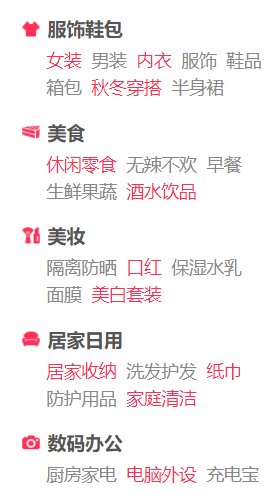如果你没有生活在上个世纪,并且是云计算或相关领域的一名搬砖者,那你应该听说最近 CentOS 8 官方正式版已经发布了,CentOS 完全遵守 Red Hat 的再发行政策,并且致力与上游产品在功能上完全兼容。CentOS 8 主要改动和 RedHat Enterprise Linux 8 是一致的,基于 Fedora 28 和内核版本 4.18,其中网络方面的主要改动是用 nftables 框架替代 iptables 框架作为默认的网络包过滤工具。如果你还没有听说过 nftables,现在是时候学习一下了。
nftables 是一个 netfilter 项目,旨在替换现有的 {ip,ip6,arp,eb}tables 框架,为 {ip,ip6}tables 提供一个新的包过滤框架、一个新的用户空间实用程序(nft)和一个兼容层。它使用现有的钩子、链接跟踪系统、用户空间排队组件和 netfilter 日志子系统。
nftables 主要由三个组件组成:内核实现、libnl netlink 通信和 nftables 用户空间。 其中内核提供了一个 netlink 配置接口以及运行时规则集评估,libnl 包含了与内核通信的基本函数,用户空间可以通过 nft 和用户进行交互。
本文主要介绍用户空间命令行工具 nft 的用法。
1.
nftables VS iptables
nftables 和 iptables 一样,由表(table)、链(chain)和规则(rule)组成,其中表包含链,链包含规则,规则是真正的 action。与 iptables 相比,nftables 主要有以下几个变化:
iptables规则的布局是基于连续的大块内存的,即数组式布局;而nftables的规则采用链式布局。其实就是数组和链表的区别,好像 Kubernetes 用户对此应该很兴奋?iptables大部分工作在内核态完成,如果要添加新功能,只能重新编译内核;而nftables的大部分工作是在用户态完成的,添加新功能很 easy,不需要改内核。iptables有内置的链,即使你只需要一条链,其他的链也会跟着注册;而nftables不存在内置的链,你可以按需注册。由于iptables内置了一个数据包计数器,所以即使这些内置的链是空的,也会带来性能损耗。简化了
IPv4/IPv6双栈管理原生支持集合、字典和映射
回到 nftables,先来看一下默认的规则集是啥:
$ nft list ruleset
啥也没有,果然是没有内置的链啊(如果你关闭了 firewalld 服务)。
2.
创建表
nftables 的每个表只有一个地址簇,并且只适用于该簇的数据包。表可以指定五个簇中的一个:
nftables簇 | iptables命令行工具 |
|---|---|
ip | iptables |
ip6 | ip6tables |
inet | iptables和ip6tables |
arp | arptables |
bridge | ebtables |
inet 同时适用于 IPv4 和 IPv6 的数据包,即统一了 ip 和 ip6 簇,可以更容易地定义规则,下文的示例都将采用 inet 簇。
先创建一个新的表:
$ nft add table inet my_table
列出所有的规则:
$ nft list ruleset
table inet my_table {}现在表中还没有任何规则,需要创建一个链来保存规则。
3.
创建链
链是用来保存规则的,和表一样,链也需要被显示创建,因为 nftables 没有内置的链。链有以下两种类型:
常规链 : 不需要指定钩子类型和优先级,可以用来做跳转,从逻辑上对规则进行分类。
基本链 : 数据包的入口点,需要指定钩子类型和优先级。
创建常规链:
$ nft add chain inet my_table my_utility_chain
创建基本链:
$ nft add chain inet my_table my_filter_chain { type filter hook input priority 0 \; }反斜线(
\)用来转义,这样 shell 就不会将分号解释为命令的结尾。priority采用整数值,可以是负数,值较小的链优先处理。
列出链中的所有规则:
$ nft list chain inet my_table my_utility_chain
table inet my_table {
chain my_utility_chain {
}}$ nft list chain inet my_table my_filter_chain
table inet my_table {
chain my_filter_chain {
type filter hook input priority 0; policy accept;
}}4.
创建规则
有了表和链之后,就可以创建规则了,规则由语句或表达式构成,包含在链中。下面添加一条规则允许 SSH 登录:
$ nft add rule inet my_table my_filter_chain tcp dport ssh accept
add 表示将规则添加到链的末尾,如果想将规则添加到链的开头,可以使用 insert。
$ nft insert rule inet my_table my_filter_chain tcp dport http accept
列出所有规则:
$ nft list ruleset
table inet my_table {
chain my_filter_chain {
type filter hook input priority 0; policy accept;
tcp dport http accept
tcp dport ssh accept }}注意 http 规则排在 ssh 规则的前面,因为之前使用了 insert。
也可以将规则插入到链的指定位置,有两种方法:
1、 使用 index 来指定规则的索引。add 表示新规则添加在索引位置的规则后面,inser 表示新规则添加在索引位置的规则前面。index 的值从 0 开始增加。
$ nft insert rule inet my_table my_filter_chain index 1 tcp dport nfs accept
$ nft list ruleset
table inet my_table {
chain my_filter_chain {
type filter hook input priority 0; policy accept;
tcp dport http accept
tcp dport nfs accept
tcp dport ssh accept }}$ nft add rule inet my_table my_filter_chain index 0 tcp dport 1234 accept
$ nft list ruleset
table inet my_table {
chain my_filter_chain {
type filter hook input priority 0; policy accept;
tcp dport http accept
tcp dport 1234 accept
tcp dport nfs accept
tcp dport ssh accept }}index 类似于 iptables 的 -I 选项,但有两点需要注意:一是 index 的值是从 0 开始的;二是 index 必须指向一个存在的规则,比如 nft insert rule … index 0 就是非法的。
2、 使用 handle 来指定规则的句柄。add 表示新规则添加在索引位置的规则后面,inser 表示新规则添加在索引位置的规则前面。handle 的值可以通过参数 --handle 获取。
$ nft --handle list ruleset
table inet my_table { # handle 10
chain my_filter_chain { # handle 2
type filter hook input priority 0; policy accept;
tcp dport http accept # handle 4
tcp dport 1234 accept # handle 6
tcp dport nfs accept # handle 5
tcp dport ssh accept # handle 3
}}$ nft add rule inet my_table my_filter_chain handle 4 tcp dport 1234 accept
$ nft insert rule inet my_table my_filter_chain handle 5 tcp dport nfs accept
$ nft --handle list ruleset
table inet my_table { # handle 10
chain my_filter_chain { # handle 2
type filter hook input priority 0; policy accept;
tcp dport http accept # handle 4
tcp dport 2345 accept # handle 8
tcp dport 1234 accept # handle 6
tcp dport 3456 accept # handle 9
tcp dport nfs accept # handle 5
tcp dport ssh accept # handle 3
}}在 nftables 中,句柄值是固定不变的,除非规则被删除,这就为规则提供了稳定的索引。而 index 的值是可变的,只要有新规则插入,就有可能发生变化。一般建议使用 handle 来插入新规则。
也可以在创建规则时就获取到规则的句柄值,只需要在创建规则时同时加上参数 --echo 和 --handle。
$ nft --echo --handle add rule inet my_table my_filter_chain udp dport 3333 accept add rule inet my_table my_filter_chain udp dport 3333 accept # handle 10
5.
删除规则
单个规则只能通过其句柄删除,首先需要找到你想删除的规则句柄:
$ nft --handle list ruleset
table inet my_table { # handle 10
chain my_filter_chain { # handle 2
type filter hook input priority 0; policy accept;
tcp dport http accept # handle 4
tcp dport 2345 accept # handle 8
tcp dport 1234 accept # handle 6
tcp dport 3456 accept # handle 9
tcp dport nfs accept # handle 5
tcp dport ssh accept # handle 3
udp dport 3333 accept # handle 10
}}然后使用句柄值来删除该规则:
$ nft delete rule inet my_table my_filter_chain handle 8$ nft --handle list ruleset
table inet my_table { # handle 10
chain my_filter_chain { # handle 2
type filter hook input priority 0; policy accept;
tcp dport http accept # handle 4
tcp dport 1234 accept # handle 6
tcp dport 3456 accept # handle 9
tcp dport nfs accept # handle 5
tcp dport ssh accept # handle 3
udp dport 3333 accept # handle 10
}}6.
列出规则
前面的示例都是列出了所有规则,我们还可以根据自己的需求列出规则的一部分。例如:
列出某个表中的所有规则:
$ nft list table inet my_table
table inet my_table {
chain my_filter_chain {
type filter hook input priority 0; policy accept;
tcp dport http accept
tcp dport 1234 accept
tcp dport 3456 accept
tcp dport nfs accept
tcp dport ssh accept
udp dport 3333 accept }}列出某条链中的所有规则:
$ nft list chain inet my_table my_other_chain
table inet my_table {
chain my_other_chain {
udp dport 12345 log prefix "UDP-12345"
}}7.
集合
nftables 的语法原生支持集合,可以用来匹配多个 IP 地址、端口号、网卡或其他任何条件。
匿名集合
集合分为匿名集合与命名集合,匿名集合比较适合用于将来不需要更改的规则。
例如,下面的规则允许来自源 IP 处于 10.10.10.123 ~ 10.10.10.231 这个区间内的主机的流量。
$ nft add rule inet my_table my_filter_chain ip saddr { 10.10.10.123, 10.10.10.231 } accept
$ nft list ruleset
table inet my_table {
chain my_filter_chain {
type filter hook input priority 0; policy accept;
tcp dport http accept
tcp dport nfs accept
tcp dport ssh accept
ip saddr { 10.10.10.123, 10.10.10.231 } accept }}匿名集合的缺点是,如果需要修改集合,就得替换规则。如果后面需要频繁修改集合,推荐使用命名集合。
之前的示例中添加的规则也可以通过集合来简化:
$ nft add rule inet my_table my_filter_chain tcp dport { http, nfs, ssh } acceptiptables 可以借助
ipset来使用集合,而 nftables 原生支持集合,所以不需要借助ipset。
命名集合
nftables 也支持命名集合,命名集合是可以修改的。创建集合需要指定其元素的类型,当前支持的数据类型有:
ipv4_addr: IPv4 地址ipv6_addr: IPv6 地址ether_addr: 以太网(Ethernet)地址inet_proto: 网络协议inet_service: 网络服务mark: 标记类型
先创建一个空的命名集合:
$ nft add set inet my_table my_set { type ipv4_addr \; }$ nft list sets
table inet my_table {
set my_set {
type ipv4_addr }}要想在添加规则时引用集合,可以使用 @ 符号跟上集合的名字。下面的规则表示将集合 my_set 中的 IP 地址添加到黑名单中。
$ nft insert rule inet my_table my_filter_chain ip saddr @my_set drop
$ nft list chain inet my_table my_filter_chain
table inet my_table {
chain my_filter_chain {
type filter hook input priority 0; policy accept;
ip saddr @my_set drop
tcp dport http accept
tcp dport nfs accept
tcp dport ssh accept
ip saddr { 10.10.10.123, 10.10.10.231 } accept }}向集合中添加元素:
$ nft add element inet my_table my_set { 10.10.10.22, 10.10.10.33 }$ nft list set inet my_table my_set
table inet my_table {
set my_set {
type ipv4_addr
elements = { 10.10.10.22, 10.10.10.33 }
}}如果你向集合中添加一个区间就会报错:
$ nft add element inet my_table my_set { 10.20.20.0-10.20.20.255 }Error: Set member cannot be range, missing interval flag on declaration
add element inet my_table my_set { 10.20.20.0-10.20.20.255 }
^^^^^^^^^^^^^^^^^^^^^^^要想在集合中使用区间,需要加上一个 flag interval,因为内核必须提前确认该集合存储的数据类型,以便采用适当的数据结构。
支持区间
创建一个支持区间的命名集合:
$ nft add set inet my_table my_range_set { type ipv4_addr \; flags interval
$ nft add element inet my_table my_range_set { 10.20.20.0/24 }$ nft list set inet my_table my_range_set
table inet my_table {
set my_range_set {
type ipv4_addr
flags interval
elements = { 10.20.20.0/24 }
}}子网掩码表示法会被隐式转换为 IP 地址的区间,你也可以直接使用区间
10.20.20.0-10.20.20.255来获得相同的效果。
级联不同类型
命名集合也支持对不同类型的元素进行级联,通过级联操作符 . 来分隔。例如,下面的规则可以一次性匹配 IP 地址、协议和端口号。
$ nft add set inet my_table my_concat_set { type ipv4_addr . inet_proto . inet_service \; }$ nft list set inet my_table my_concat_set
table inet my_table {
set my_concat_set {
type ipv4_addr . inet_proto . inet_service }}向集合中添加元素:
$ nft add element inet my_table my_concat_set { 10.30.30.30 . tcp . telnet }在规则中引用级联类型的集合和之前一样,但需要标明集合中每个元素对应到规则中的哪个位置。
$ nft add rule inet my_table my_filter_chain ip saddr . meta l4proto . tcp dport @my_concat_set accept
这就表示如果数据包的源 IP、协议类型、目标端口匹配 10.30.30.30、tcp、telnet 时,nftables 就会允许该数据包通过。
匿名集合也可以使用级联元素,例如:
$ nft add rule inet my_table my_filter_chain ip saddr . meta l4proto . udp dport { 10.30.30.30 . udp . bootps } accept现在你应该能体会到 nftables 集合的强大之处了吧。
nftables 级联类型的集合类似于 ipset 的聚合类型,例如
hash:ip,port。
8.
字典
字典是 nftables 的一个高级特性,它可以使用不同类型的数据并将匹配条件映射到某一个规则上面,并且由于是哈希映射的方式,可以完美的避免链式规则跳转的性能开销。
例如,为了从逻辑上将对 TCP 和 UDP 数据包的处理规则拆分开来,可以使用字典来实现,这样就可以通过一条规则实现上述需求。
$ nft add chain inet my_table my_tcp_chain
$ nft add chain inet my_table my_udp_chain
$ nft add rule inet my_table my_filter_chain meta l4proto vmap { tcp : jump my_tcp_chain, udp : jump my_udp_chain }$ nft list chain inet my_table my_filter_chain
table inet my_table {
chain my_filter_chain {
...
meta nfproto ipv4 ip saddr . meta l4proto . udp dport { 10.30.30.30 . udp . bootps } accept
meta l4proto vmap { tcp : jump my_tcp_chain, udp : jump my_udp_chain }
}}和集合一样,除了匿名字典之外,还可以创建命名字典:
$ nft add map inet my_table my_vmap { type inet_proto : verdict \; }向字典中添加元素:
$ nft add element inet my_table my_vmap { 192.168.0.10 : drop, 192.168.0.11 : accept }后面就可以在规则中引用字典中的元素了:
$ nft add rule inet my_table my_filter_chain ip saddr vmap @my_vmap
9.
表与命名空间
在 nftables 中,每个表都是一个独立的命名空间,这就意味着不同的表中的链、集合、字典等都可以有相同的名字。例如:
$ nft add table inet table_one
$ nft add chain inet table_one my_chain
$ nft add table inet table_two
$ nft add chain inet table_two my_chain
$ nft list ruleset...table inet table_one {
chain my_chain {
}}table inet table_two {
chain my_chain {
}}有了这个特性,不同的应用就可以在相互不影响的情况下管理自己的表中的规则,而使用 iptables 就无法做到这一点。
当然,这个特性也有缺陷,由于每个表都被视为独立的防火墙,那么某个数据包必须被所有表中的规则放行,才算真正的放行,即使 table_one 允许该数据包通过,该数据包仍然有可能被 table_two 拒绝。为了解决这个问题,nftables 引入了优先级,priority 值越高的链优先级越低,所以 priority 值低的链比 priority 值高的链先执行。如果两条链的优先级相同,就会进入竞争状态。
10.
备份与恢复
以上所有示例中的规则都是临时的,要想永久生效,我们可以将规则备份,重启后自动加载恢复,其实 nftables 的 systemd 服务就是这么工作的。
备份规则:
$ nft list ruleset > /root/nftables.conf
加载恢复:
$ nft -f /root/nftables.conf
在 CentOS 8 中,nftables.service 的规则被存储在 /etc/nftables.conf 中,其中 include 一些其他的示例规则,一般位于 /etc/sysconfig/nftables.conf 文件中,但默认会被注释掉。
11.
总结
希望通过本文的讲解,你能对 nftables 的功能和用法有所了解,当然本文只涉及了一些浅显的用法,更高级的用法可以查看 nftables 的官方 wiki,或者坐等我接下来的文章。相信有了本文的知识储备,你应该可以愉快地使用 nftables 实现 Linux 的智能分流了
本文链接:https://kinber.cn/post/3260.html 转载需授权!
推荐本站淘宝优惠价购买喜欢的宝贝:

 支付宝微信扫一扫,打赏作者吧~
支付宝微信扫一扫,打赏作者吧~


